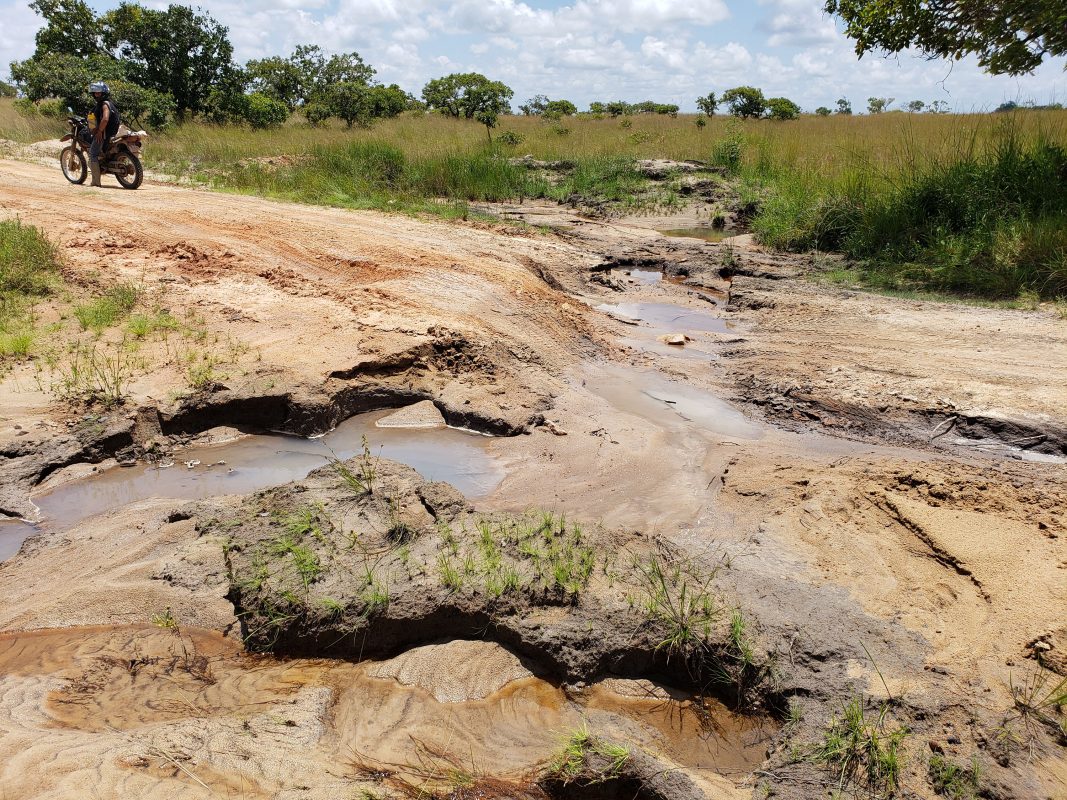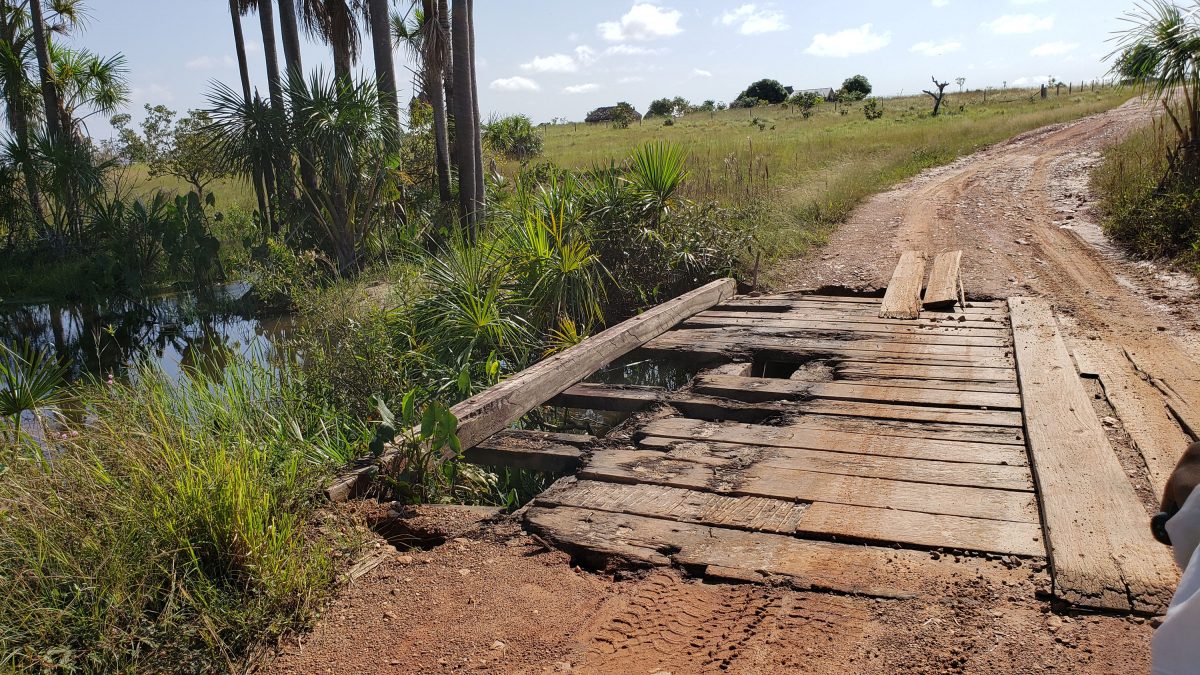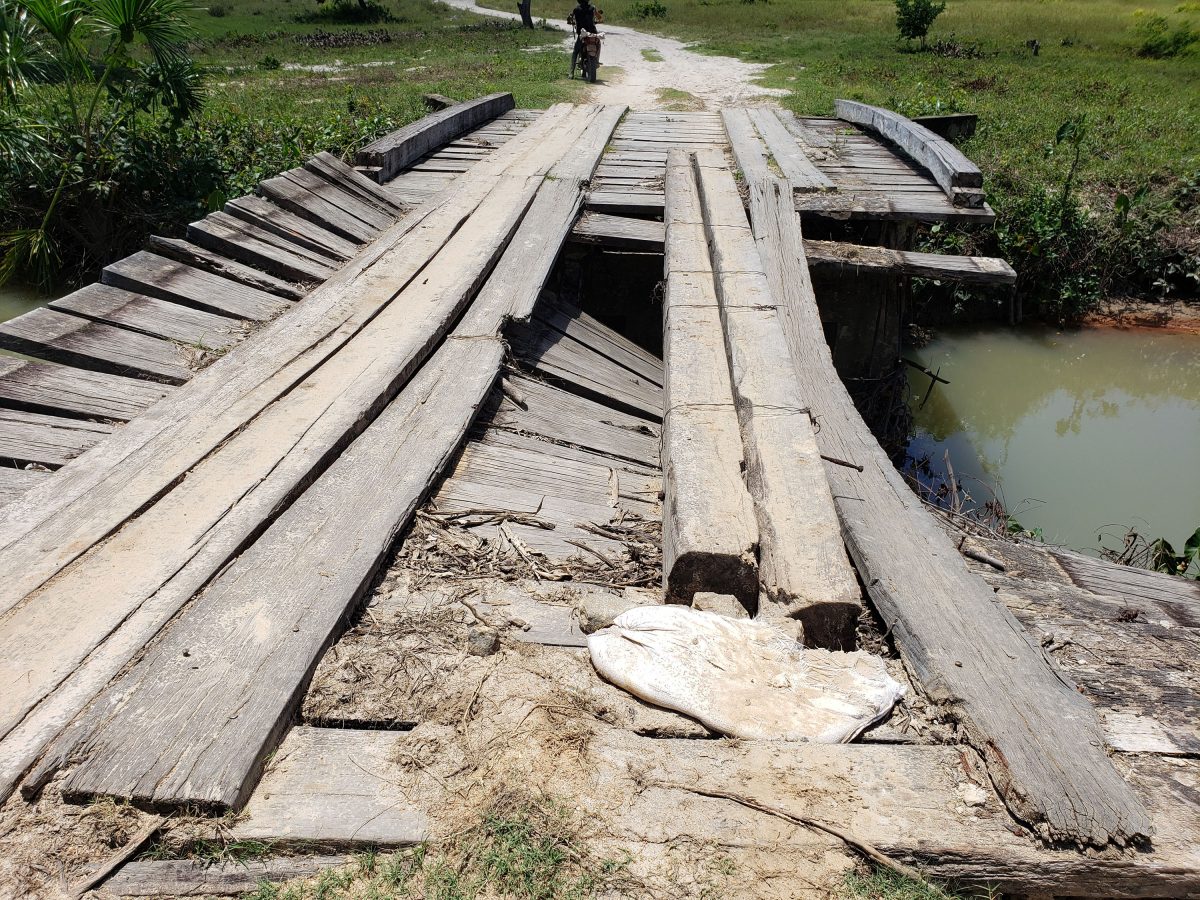The perennial poor state of the transport infrastructure in the South Rupununi makes travel risky in the sprawling savannah region and with disintegrating bridges and crumbling roads continuing to plague the area, residents are wondering if the authorities would ever heed their cries for improvement.
The deplorable state of the main roads is a long-standing problem in the Rupununi, which, according to information gathered, is made worse by the heavy rainfall that the savannah region experiences every six months. For persons who ply the eastern Aishalton-Lethem road, the main problem is the Rupununi bridge, which is built on a lowland area at Katoonarib.
Consequently, during the rainy season when the Rupununi River and a nearby creek crests, it is impossible to access the bridge to get to the other side and continue their journey. Usually when this happens, travelers are stranded for at least two days. This has been occurring since the bridge was constructed several years ago.

“This problem cannot be fixed. This is nature. If they are looking for a solution which won’t cause damage to the environment, fix the back road and bridges ’cause years from now, you will still be hearing about people stuck at the Rupununi bridge,” one resident said.
For some, rather than waiting for water levels in the river to drop, they reluctantly traverse the western Aishalton-Lethem road, which is in a worse state than the eastern road. However, they take
the risk as they don’t want their perishable products to spoil. The western road is constantly traversed by residents of Parabara, Karaudarnau, Achiwib, Bashazion and others who wish to arrive at the Marudi Moun-tains from Lethem in a shorter time than if they traversed the eastern road. It is also a shorter distance from each of these villages to Lethem than if they traversed the eastern road.
Meanwhile, residents from Aishalton, Maruranau, Aware-waunau and Shea prefer to traverse the eastern road as it too, is a shorter distance from their villages to Lethem but more importantly, it is in a better condition than the western road. During the dry season, persons entering and leaving Marudi would also prefer to travel on the eastern road because of its condition even though they take much longer to reach Lethem.

Though the dry season is now approaching, Aishalton toshao Michael Thomas said that there is still constant rainfall which results in further damage to the road. However, the main concern now relates to the section of the road in the Central Rupununi. “The worse part of the road now is near Shulinab. Vehicles are sticking up and people have to walk in mud and water,” Thomas said. He said that part of the trail is vital for residents of the South Rupununi to access Lethem. He added that it is very risky for them to travel the road.
For years, the villages that utilise the western road have been asking various government officials who enter those villages to fix the road and bridges to no avail.
‘Never respond’
“We always ask them [to fix the road and bridges] when they come around but they never respond. At one point, we tried to fix one of the bridges ourselves but what we did is only temporary and we don’t have equipment to fix the road. We don’t have money to do anything better or to buy gas to use the other road and those ministers will come to visit us by planes to tell us to vote for them but will not travel the road we have to travel to get food supplies,” a village councillor of Karaudarnau said.
A businessman from Achiwib revealed that the road which connects Achiwib to Karaudarnau, which in turn connects them to the Lethem road, was recently upgraded after years of them “begging” for a better road. However, one of the culverts at a creek called Nadun on the Achiwib-Karaudarnau road has been washed away for over a year and is very dangerous but because they need supplies, they also take “a chance.”
In addition, he said, there is a need for a bridge at one of the creeks called Ermiz. During the rainy season, he said, the creek overflows and they are unable to travel to Lethem and would have to wait a couple of days before the water in the creek goes down. He disclosed that Achiwib is one of the villages that persons, with the exception of miners heading to the Wakadanau mines, rarely travel to, unless it hosts the August Games or the Inter-Schools Championship.
However, he knows for a fact that residents from Achiwib always use the western road when they are travelling to Lethem. “They just assuming we traveling on the (eastern) road they always fix. We have to take risks if we want to travel these days,” he concluded.
“You don’t like the road, try not to look at the bridges,” Mark Stephens of Karaudarnau told this reporter during a visit to the South Rupununi.
According to information and observations, indeed the bridges in the South Rupununi roads were in a worse state than the roads. Speaking about a bridge close to the Rupununi River on the eastern road to Lethem, Antonio James of Aishalton, who regularly traverses the road, said that the “rotten bridge” is one of the worst in South Rupununi. “It is very dangerous. If someone who doesn’t know the bridge travels this way, they can find themselves in a fatal accident,” he said. He hopes that the bridge will be fixed as soon as possible.
Thomas also commented on the condition of the bridge. He said that he is reluctant to take action because the bridge falls in the Katoonarib area. He further revealed that the bridge has been in that condition for months. Additionally, he said, the Kabanawau and Makawau bridges in Aishalton are slowly decaying and in a terrible condition.
“Despite the conditions these (three) bridges are in, heavy duty vehicles and big trucks are still using them and it is very dangerous,” he said before making reference to the bridge that collapsed under the weight of an excavator near Shulinab over a year ago. “That can happen here on any of the bridges in the state that they are in,” he said.
For Shea residents, it is a risk to travel to Aishalton. In order to get to Aishalton, they have to cross a bridge in Marurunau, which is currently in a deplorable state. “I don’t know what’s going to happen when I take my children back to secondary school in Aishalton,” Andrew (only name given) of Shea told Stabroek News. He further revealed that when it was announced that Sydney Allicock, the Minister of Indigenous Peoples Affairs would be visiting Shea during the August Games, he became hopeful that the problem will be solved. “Now he can see the states our road and bridges are in and what we have to go through just to access education or food,” he added.
Maruranau toshao Ambrose Bento revealed that he had written a letter to an official in Lethem and he was promised that the reconstruction of the bridge will begin soon. According to Bento, the right side of the bridge had collapsed over a month ago but despite that, residents continue to use it and even placed two planks across so vehicles can cross. He said that the usage of the collapsed bridge had increased due to the fact that the annual August Games was held in Shea. In order to get to Shea, persons must cross the bridge or take another risk of getting stuck in the creek below.
Meanwhile, on the western road, the Ko’naro bridge is rapidly decaying as well. The deputy toshao of Karaudarnau Arnold Stephens explained that while the bridge is still sturdy, the planks are decaying and need to be replaced. The bridge is vital for persons traversing the western road. In addition, the Ma’kadod bridge, which was allegedly under repairs last June, is still in the same condition or worse and travelers can no longer utilise the bridge. “They [contractors] were reportedly fixing it during the rainy season but they left it and now rain isn’t falling much but they haven’t resumed repairing the bridge,” Stephens said.
In order to cross the Ma’kadod creek, for safety, all passengers have to disembark vehicles or motorcycles so the drivers can drive through the creek with the knowledge that no one is in harm’s way crossing the dangerous creek.
Stephens also mentioned a bridge close to Katoonarib which is only being “patched.” He said that just months after being repaired, the bridge would collapse. “They [contractors] need to do a good job. Here, everything just collapsing. What does that tell you about the contractors,” he asked.









